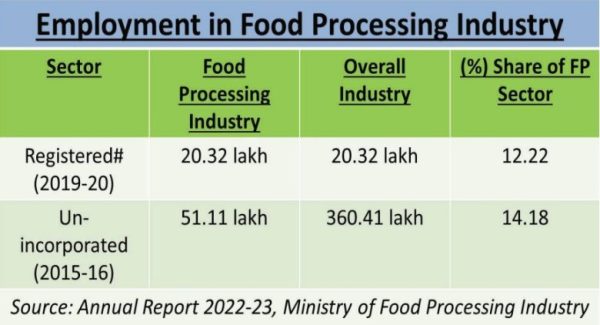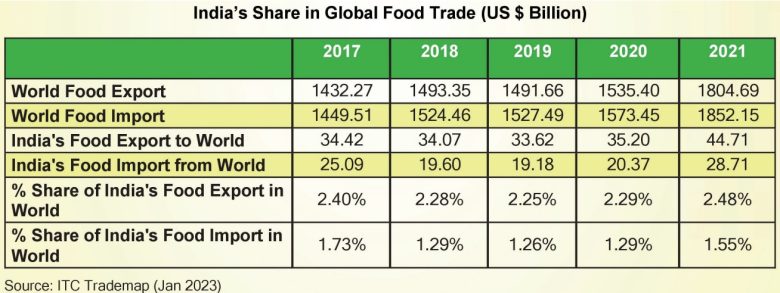
Delhi6:34 AM | 27th April 2024
The basic difference is that agriculture deals primarily with pre-harvest necessities and operations across all crops, livestock and aquaculture. But the domain of food science and technology deals with post-harvest operations.

Ranked among World’s Top 2% scientists by Stanford University in the US for the fourth consecutive year, Prof. B.S. Khatkar, Professor Emeritus at Dehradun’s Graphic Era University, talks at length with Education Post’s Tanay Kumar to explain why education should be the number one priority for Indians.

The basic difference is that agriculture deals primarily with pre-harvest necessities and operations across all crops, livestock and aquaculture. But the domain of food science and technology deals with post-harvest operations. Albeit, there surely is a strong linkage between agriculture and agri-processing or food science. If one has a deep understanding of agriculture, livestock, crops etc., then the study of food technology or food processing becomes a lot easier.
Further, since food science deals in the chemical compositions of any food, either veg or non-veg, this branch also deals in the increasing the shelf life of crops or livestock or food for that matter.
My father, Ran Singh Khatkar, was an officer in the Indian Army but he was really interested in agriculture and harvesting. He always used to spend time in the fields whenever he would get time. My mother, Phoola Devi, currently at 92 years of age, is a homemaker, but she was also interested in agrarian works and procurements. So, somehow these backgrounds also inspired me towards food science and technology.

First and foremost, as citizens and society, we are giving the least priority to education. On average, we have been spending only 2-3% of our GDP for many years, but we collect hefty tax from the education sector. After World War II, Japan started allocating almost 50% of their GDP towards education. Today, most of India’s youth population is literate, but I doubt they are really educated and are acquiring appropriate skills required by the industry.
The allocation of resources and budget for research is somehow the mirror image of our priorities. Currently, there are more than 1000 universities in India. Colleges have gigantic buildings within their campuses but they don’t have actual infrastructure. Actual infrastructure, real infrastructure, has all kinds of necessary facilities, such as laboratories, equipment, etc. How will science students understand a theory if they don’t practice what they are studying?
Further, if we want to enhance research in our country, we must ensure that our leaders also emphasize education, rather than trivial issues. And, two more important things: first, research entails modern technologies; and second, moderate level of practical equipment may suffice, but you need educated and learned research experts to generate great ideas incubate them and evolve technologies to help growth of the industry and economy.

I deliberately chose those areas for my patents. My first patent is about detection of urea in milk. There is one big irony. India is among the top milk producers in the world, but most of the times, particularly in summer times, we fall short in milk supply. My study and patent is about the adulteration of urea in milk as it increases the viscosity and thickness of milk. Urea is also extensively used in making synthetic milk. Therefore, urea has been affecting most of our vital organs. We developed the methods of urea detection in milk as the available methods were very complex and required very sophisticated equipment. So, I invented the method of urea detection in milk with the help of commonly available chemicals.

The second patent is about prevention of browning in sesame seeds at elevated temperatures. India is the largest exporter of sesame seeds. Preventing sesame seeds from browning is very important.
We had also worked in some other important areas like color improvement of tofu, which is a very commonly known source of protein. Tofu has many benefits but Indian consumers shy away from it because of its dark color. So, my team successfully improved the color of tofu. We have also improved the shelf life of many fruits and vegetables by edible coatings.

Surely there are branches and areas where skilled and learned people are really in need and students should definitely opt for them. One such branch or area is food safety and hygiene. All multinational companies are really concerned about the safety of their food products. Students on this path must know about certifications like BRC (British Retail Consortium), FSSC 2200 (Food Safety System Certification), GMT, HSCT, and other safety standards.
Second is food quality. Every food business is concerned about the quality. There can’t be a business in the food industry without ensuring quality. Therefore, a complete understanding of raw materials and also the finished food quality and the regulation of the food products is essential for this branch. So, students can explore the lucrative jobs of food quality manager, food quality inspector, food quality controller.
Third domain in food science is surely research and development. Today, in the day and age of consumerism, when people are exploring many food options, innovating new food and sustainably processed food could be really worthwhile for students. Students could assess the necessity of this career choice. Nestle has established their research center at Manesar while ITC Groups has established a huge R&D center in Bengaluru and around 400 food scientists are working in it. Bunge, known for edible oil processing, has established a big research center at Rajpura, Punjab. So, research is surely an optimal option.
Also, streams like fruits and vegetable processing, grain processing, milk processing, meat and poultry processing, additive processing are some other areas to explore.
Last but not the least, the food entrepreneur domain is an area that I encourage students to look at as the beauty of this sector doesn’t necessitate big capital investment. One can start with an investment amount of Rs. 10-20 lakh and can keep on enhancing, depending on diversification and expansion.
In fact, I have a very interesting example of my own student. Once, only one student opted for entrepreneur study in a batch and he was a kind of laggard one and dull at academics. With a capital of Rs. 10 lakh, he started his own food business, and now his company’s valuation is around Rs. 100 crore.


There are multiple challenges in this sector and that’s the reason that this sector is not attracting much students. First of all, there are only limited reputed and lab-equipped universities that offer this course as a proper career-driven study. There are about seven good and reputed institutes in this country and students are not even aware of them. For example, CFTRI (Central Food Technological Research Institute) in Mysuru is the top institute in this domain. Some similar courses run at other eminent institutions also, but they are not the priority of the institute’s administration and thus students also don’t take much interest in these branches.
Multinational companies arrive at these institutions but they are unable to find quality workforce. Also, the constant lack of experienced faculty is another major problem in this stream.
Infrastructure and modern laboratories are vital for food science and food technology. And there is very inadequate availability of practical equipment for the students. Many companies working in the food processing or food science industry complain that the students don’t even know about the machinery of food technology.

Well, as such, there surely is a disconnect between the industry and academia in India. And as you understand, in developed economies like those in Western Europe, all faculty and professors have tie-ups with the industries corresponding to their respective streams. In India, it is surely lacking. And because of this disconnect, the industry doesn’t have faith in students. If they initiate something, the industries always have apprehension whether this approach will be fruitful or not.
Plus, the vice chancellors or the directors or the heads of the institutes are not as enthusiastic as they should be. And if any teacher wants to solve this problem, administrative or other problems are almost inevitable. And I think there are two reasons for this plight: first, heads of the academic institutions are not made accountable for the work done at the institutions. Departments headship is on rotation basis, rather than performance. Secondly, there is an assured promotion in government colleges. Bringing and collaborating efficiently with industries must be a crucial parameter for promotions.
Last but not the least, I just wish that we, as Indians, could sustainably utilize our agricultural resources and the climate that nature has bestowed upon our land. Perhaps, there is no other nation that has such a wide variety of weather, which we get. I want to say it absolute conviction that just like India’s IT industry, agro-processing, food technology have the same level of capacity and caliber to contribute to the economy.
Copyright© educationpost.in 2024 All Rights Reserved.
